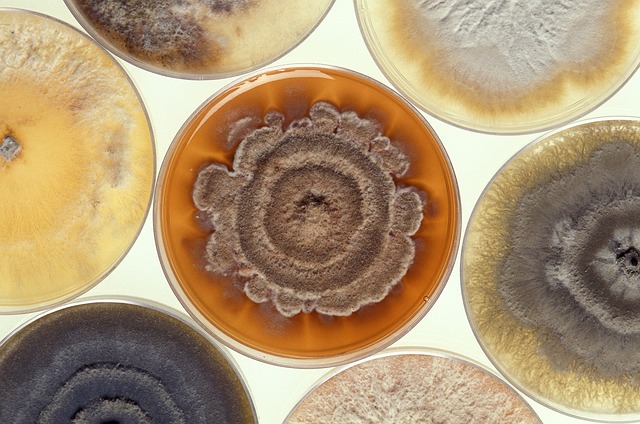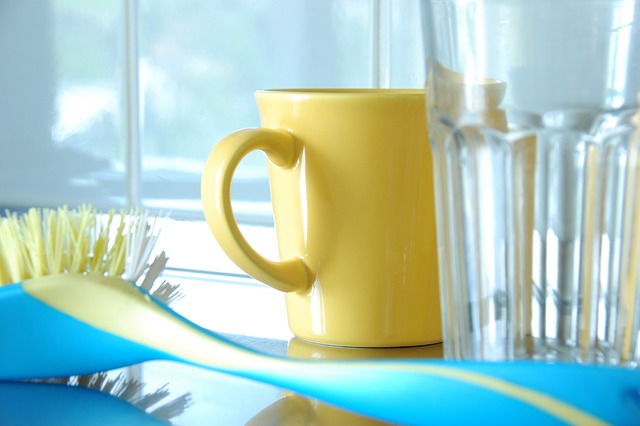
(Source: FreePik)
Parents around the country are beginning to panic and worry about their children’s health after a mom from Missouri discovered mold hiding in her child’s Tommee Tippee sippy cup.
This mother followed all the right steps for cleaning her child’s cup, including washing each piece with warm soapy water before running it through the dishwasher.
However, despite her efforts, there was still mold hiding within the stopper itself, which is impossible to clean while keeping the cup functional (this mother had to saw it open).
Though the story was from two years ago, it is still relevant enough to bring attention to the health issues that can be traced back to mold hiding in your child’s sippy cup.
Where does the growth start and what can you do to prevent it from happening?
Mold Growth and Your Child’s Health

Mold thrives in damp environments (Source: Pixabay)
Anywhere moisture can get trapped can easily become a breeding ground for mold. This includes bath toys with holes (i.e. squirting toys) and hard to reach areas in your child’s sippy cup.
Mold growth – and ingestion – can cause a lot of health problems for anyone but especially little children and babies who have immature immune systems.
Side effects of mold exposure can include:
- Nasal stuffiness
- Throat irritation
- Coughing or wheezing
- Eye irritation
- Skin irritation
Mold growth is very common in sippy cups, but it doesn’t always cause a reaction in children or adults. Some may be more sensitive to allergic to mold while others may not notice anything at all.
However, if you do happen to notice an unusual rash or respiratory issue, or if your child begins to complain about a “funny taste” when using their regular sippy cup, it may be something worth looking into.
What Type of Cup are You Using?
While spill-proof cups are a great idea for kids who are transitioning from bottle to cup, it’s not the best choice when it comes to your child’s health.
The reason these cups “spill-proof” is due to the extra valve that is typically found on the underside of the cup.
These valves are usually removable, but they also create the perfect space for mold to grow unseen if they aren’t cleaned properly.
Even if you remove all the pieces and run them through the dishwasher between uses, there may still be some hidden areas that cannot be cleaned, such as in the case of the Tommee Tippee cup.
What are You Putting into the Cup?
Mold needs three things in order to grow and thrive: moisture, warmth, and food.
Anything you put into the cup will be moist, of course, but what you are putting into the cup can make a big difference when it comes to mold growth.
Firstly, you should never put warm or hot drinks into your child’s sippy cup. It creates a perfectly warm and moist environment for mold growth and also puts your child at risk for burns in their mouth.
You should also try to avoid using sippy cups for juice if at all possible. Even though fruit juices can be healthy in moderation, these drinks can wreak havoc on children’s teeth as well as create a sticky, sugary surface for mold to grow.
How are You Cleaning the Cup?
With spill-proof cups, you need to take it apart completely every time you clean it. This means every piece that easily detaches needs to be scrubbed and sanitized every time.
Not only does the cup need to be clean but you also need to make sure it is allowed to dry thoroughly before reassembling.
Many times, parents will replace stoppers and lids on these cups before they are completely dry, trapping moisture inside. This is an especially big problem when the cup comes out damp and warm from the dishwasher.
Invest in a dish drying rack even if it is just for your child’s cups. Allow them to drip dry for at least 24 hours before you replace the lid and store it in the cabinet.
You can even consider keeping the cup dissembled until you are ready to use it.
A Clean Cup is a Healthy Cup

Clean and dry thoroughly to reduce the chance of mold growth (Source: Pixabay)
As we have seen from the Tommee Tippee example, even the most thorough cleaning may not be enough to stop mold growth in your child’s sippy cup.
In order to ensure that your child stays healthy and their cup remains clean and mold-free, there are a couple of things you can do.
If you are particularly attached to spill-proof sippy cups, you may need to consider replacing them on a regular basis – or at least the spout and stopper. It is nearly impossible to prevent all mold growth in these cups.
An even better open is to ditch the traditional sippy cup and go with an open cup instead. These are much easier to clean as it is just one piece and actually promotes better oral development in kids.
Whatever option you choose, just remember that a clean and dry cup is a healthy cup.
About The Author:
Hi, my name is Schianne, wife to my high school sweetheart and mother of a beautiful and clever little girl. I’ve always had a passion for all things writing and literature, and motherhood has really allowed me to bring that passion to life. Experiencing how wonderfully challenging pregnancy and motherhood can be has made me want to share my story and experiences with other mothers to help them realize two very important things: you are not alone and you are stronger than you think!




